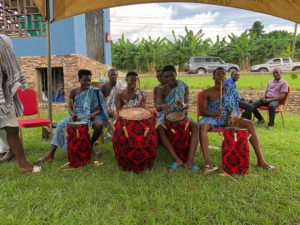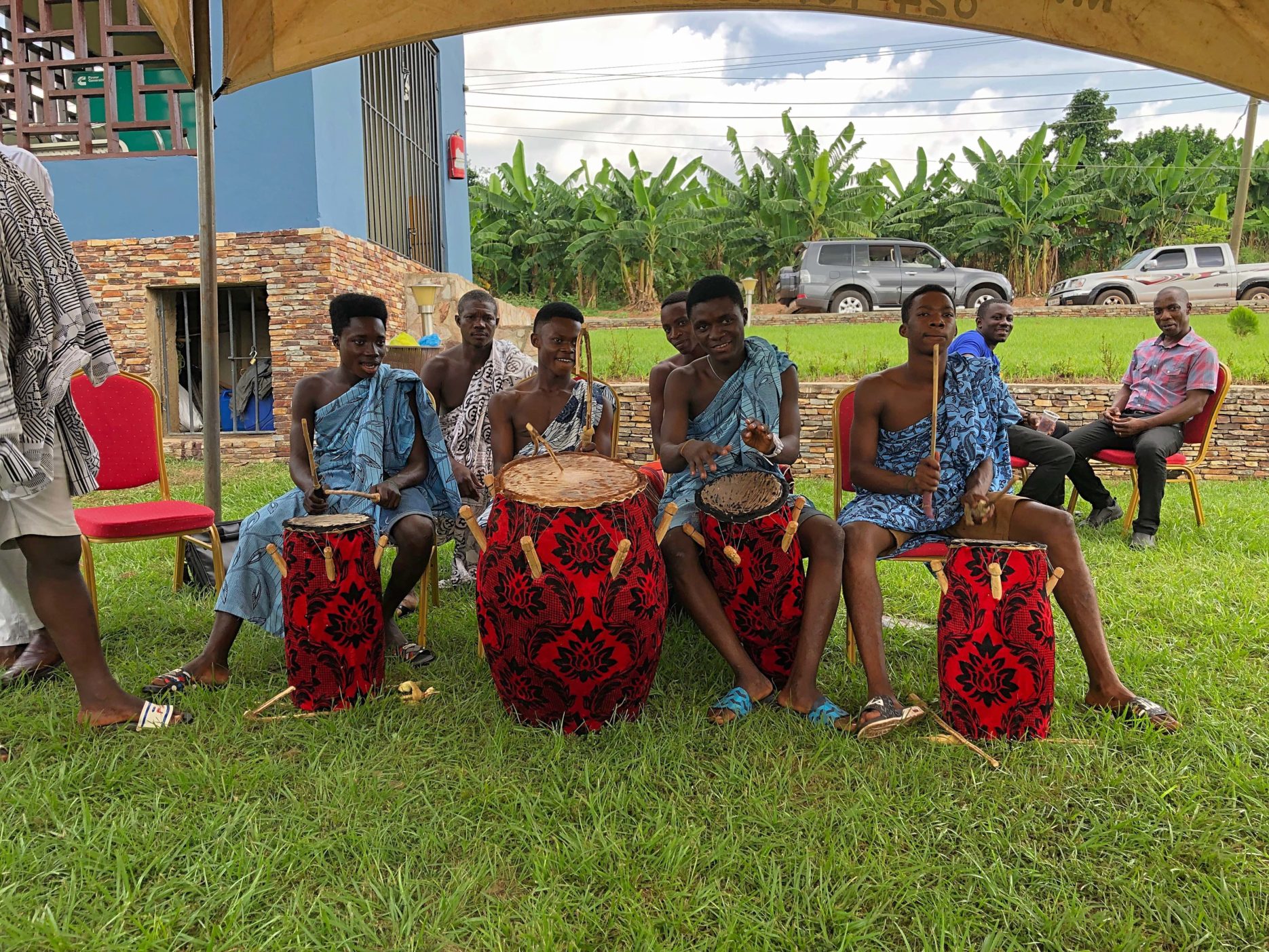by Chris Pyo
KUMAWU, GHANA – The thumping of drums pulsates through the airwaves as a bus mixed with American students and modern-day Ashanti kings and queens pulls up to a grinding halt.
Dressed in traditional blue Ashanti garb, four drummers begin to blast sophisticated rhythms on drums adorned with animal skins and Adinkra symbols. These drummers serve as a cultural connection to a history of people that still honor the concept of African kings and queens in a Westernized era where these notions are considered outdated.
The Kumawu Atienfie Akyeremadefos, which translates to the Kumawu Palace Drummers in the Asante-Twi language, are a group of 12 drummers and a single dancer who work for the Kumawu Palace.
They are commissioned by the palace to dance and perform at different celebrations, ranging from weddings and funerals to official ceremonies involving regional Ashanti kings and queens.
17-year-old Junior Dwah Charles is the sole dancer of the group and also doubles as a drummer. He was discovered by the palace at the Tweneboah Koduah Senior High School, which holds a dance competition every year to discover potential members for the group.

“It’s part of my heritage, and I feel a lot of pride when I dance because it honors both my family and my culture and allows me to express myself in a way that makes me feel joyful” said Charles, who started dancing as an infant and officially began performing with the group four years ago.
Samuel Kwame Yamoah, 33, has been drumming since 2001 and joined the group as a student. He was similarly recruited to the group through a dance competition and has been performing for the palace ever since. For today, he oversees the four younger drummers as they demonstrate the features and purpose of each drum before layering them over one another.

There is the Kwadum, which is the master drum. Located in the middle of the drumming pack, it is played with sticks that have curved edges, almost resembling small canes. It takes a drummer several months to get a feel for the Kwadum, which at one moment might be played to compliment the other drums for 32 bars, then comes roaring in for a solo and overshadows all of the other drums.
On the right is the Petia, which is a smaller version of the Kwadum but produces as booming of a sound when hit directly. Its purpose is to supply a constant bassline for the lighter drums to play more intricate rhythms over.
To the left of the Kwadum is the Aburukuwa, which is a lighter version of the Petia and is played with regular sticks. It oscillates between the bassline and its own unique rhythm.
Finally, the Aprentema is sandwiched between the Kwadum and the Petia. Sometimes difficult to hear, it is a smaller drum that produces a lighter-pitched sound and is played with the hands.
There are also two bells called the Dono and the Dawuro, which also enhance the sound of the group and adds another layer of musicality to the drumming.
The group regularly rehearses twice a week for two hours at a time, although their levels of practice are increased when they are slated to perform at an official function.
“We use drumming and dancing to talk to people and to make occasions happier,” said Yamoah. “Junior (the main dancer) performs acrobatics in the dances and uses his skills to call somebody, appreciate someone or just to have fun.”
“That is the purpose of our performances, not only to simply perform in front of thousands of people, but also to communicate our history and tradition to anyone who is around to hear us.”

